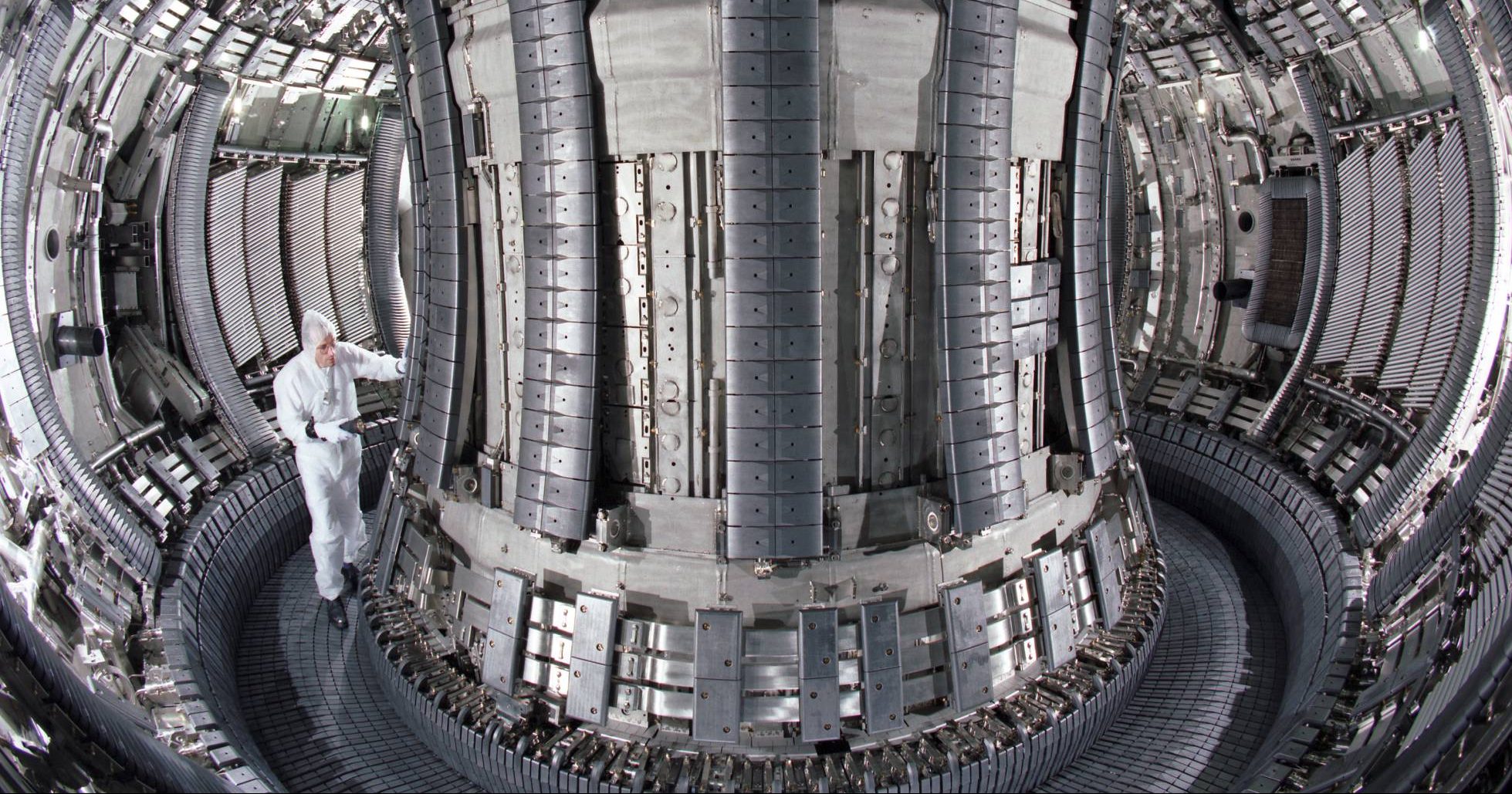
The Joint European Torus (JET) is the biggest operating tokamak in the world and the only one capable of performing deuterium-tritium (D-T) experiments. This plasma mixture, D-T, is specially relevant in magnetic confinement fusion as its fusion cross section peaks at relatively low energies as compared to other plasma compositions, in other words, it is easier to obtain a large number of fusion reactions. In fact, D-T experiments were already carried out at JET during the 90s, they are known in the community as the DTE1 experiments, and they have provided an invaluable source of experimental knowledge.
JET has undergone several upgrades since those experiments and has been equipped with a similar inner wall as that of ITER, this new wall is made of tungsten (W) and beryllium (Be), it is the so-called ITER-like wall (ILW). This upgrade allows the inner wall to be capable of sustaining larger temperatures and avoid erosion as compared to the previous one. Presently, JET is getting ready for its second D-T campaign which we will refer to it as DTE2 from now on. These preliminary campaigns have many goals in mind but we will shorten the list to the most critical aspects to assess before diving straight into a D-T mixture:
- How can we maximise the number of fusion reactions?
- What is going to be the impact of the isotope effect?
- How can we assess the alpha generation and confinement?
Basically, these are the three cornerstones of the present experiments at JET. Point (1) is rather obvious, point (2) tries to answer what is going to happen if we change the average atomic mass of the plasma, i.e., a full H plasma would have average atomic mass A = 1, a full D plasma A = 2 and a full T plasma A = 3. In transport, the isotope composition has a strong impact on several related quantities such as the heat, particle and momentum confinement, therefore, we need to understand or predict how they are going to vary for a D-T plasma (A~2.5). Point (3) is essential if we want to keep heating the plasma with the product of the D-T fusion reactions, helium (He) ions or alphas as they are known when ionised, or more poetically, as fusion ashes. The ignition concept, i.e., the plasma keeps burning without external heating, hinges around the capability to confine the alphas. We are delving on several physical effects that should be observable and measurable in the case that alphas are actually confined.
For all these reasons JET is on an ongoing campaign where we are studying D plasmas (C38). The second part of the present campaign (C38B) started recently. Important mention to the heating systems which are performing excellently and in particular the NBI system which has already reached the 32MW peak. This allows us to keep developing high fusion power scenarios needed for DTE2. After this D campaign (A = 2) we will move to a T campaign (A = 3). These series of campaigns will conclude with the expected DTE2 campaign where we hope to apply all the knowledge gathered in the previous campaigns to obtain the best possible results.
Paraphrasing the mythical rock band Led Zeppelin… is JET going to build a stairway to heaven for ITER?

2 thoughts on “JET plasmas burning again with the promise of the D-T plasmas at the end of a long run”